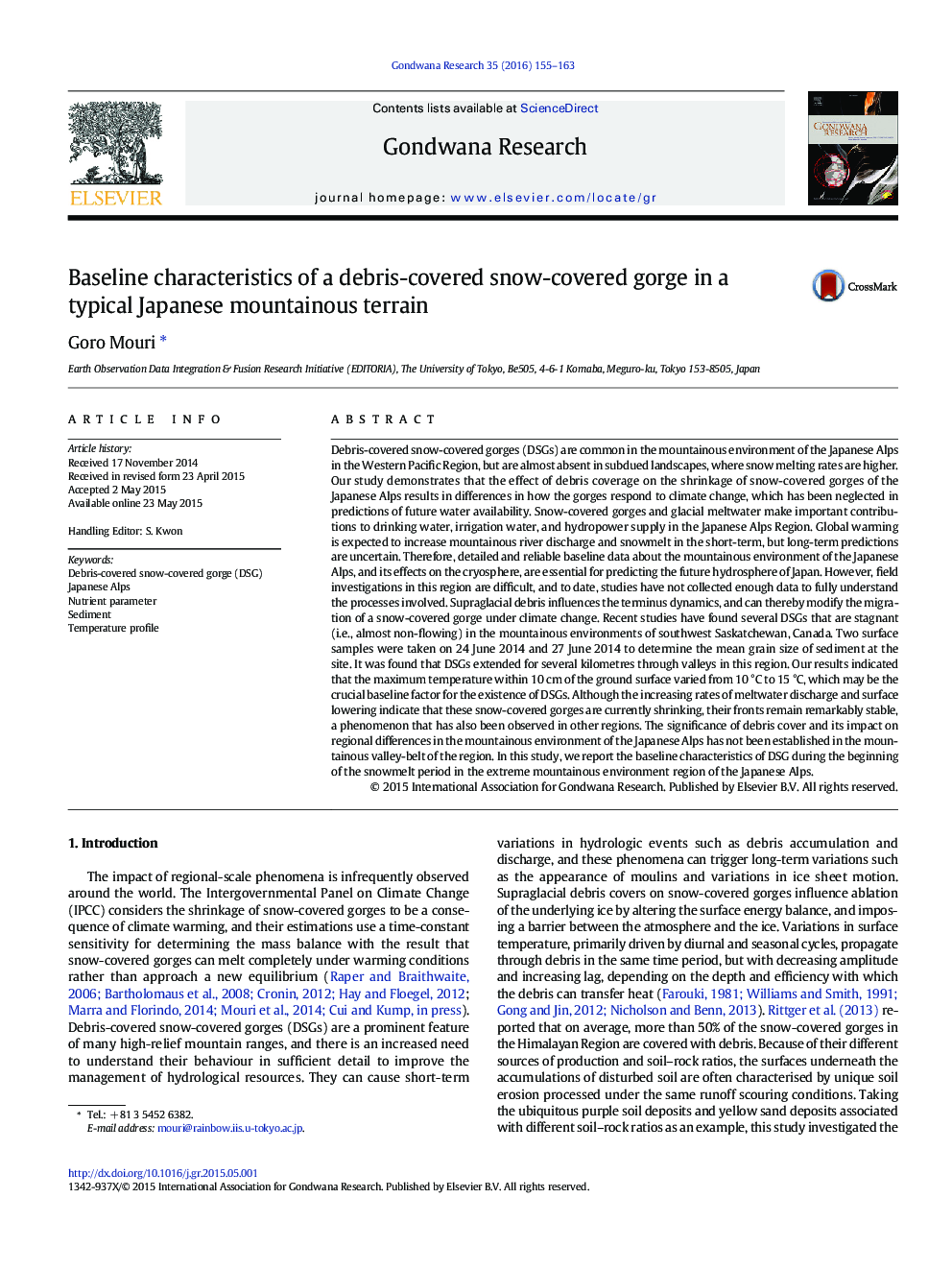| کد مقاله | کد نشریه | سال انتشار | مقاله انگلیسی | نسخه تمام متن |
|---|---|---|---|---|
| 4726594 | 1640136 | 2016 | 9 صفحه PDF | دانلود رایگان |
• We assessed the interactions among debris-covered impacts on snowy gorge.
• The typical nutrient parameters and temperature profiles were considered.
• The nutrient concentrations observed at two different sites indicate significantly different characteristics.
Debris-covered snow-covered gorges (DSGs) are common in the mountainous environment of the Japanese Alps in the Western Pacific Region, but are almost absent in subdued landscapes, where snow melting rates are higher. Our study demonstrates that the effect of debris coverage on the shrinkage of snow-covered gorges of the Japanese Alps results in differences in how the gorges respond to climate change, which has been neglected in predictions of future water availability. Snow-covered gorges and glacial meltwater make important contributions to drinking water, irrigation water, and hydropower supply in the Japanese Alps Region. Global warming is expected to increase mountainous river discharge and snowmelt in the short-term, but long-term predictions are uncertain. Therefore, detailed and reliable baseline data about the mountainous environment of the Japanese Alps, and its effects on the cryosphere, are essential for predicting the future hydrosphere of Japan. However, field investigations in this region are difficult, and to date, studies have not collected enough data to fully understand the processes involved. Supraglacial debris influences the terminus dynamics, and can thereby modify the migration of a snow-covered gorge under climate change. Recent studies have found several DSGs that are stagnant (i.e., almost non-flowing) in the mountainous environments of southwest Saskatchewan, Canada. Two surface samples were taken on 24 June 2014 and 27 June 2014 to determine the mean grain size of sediment at the site. It was found that DSGs extended for several kilometres through valleys in this region. Our results indicated that the maximum temperature within 10 cm of the ground surface varied from 10 °C to 15 °C, which may be the crucial baseline factor for the existence of DSGs. Although the increasing rates of meltwater discharge and surface lowering indicate that these snow-covered gorges are currently shrinking, their fronts remain remarkably stable, a phenomenon that has also been observed in other regions. The significance of debris cover and its impact on regional differences in the mountainous environment of the Japanese Alps has not been established in the mountainous valley-belt of the region. In this study, we report the baseline characteristics of DSG during the beginning of the snowmelt period in the extreme mountainous environment region of the Japanese Alps.
Figure optionsDownload as PowerPoint slide
Journal: Gondwana Research - Volume 35, July 2016, Pages 155–163
